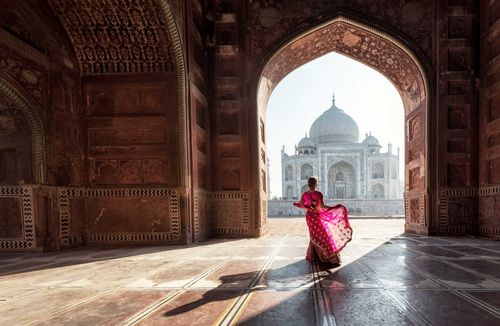How to get around
Getting around well-planned Chandigarh is rather effortless but probably best explored on foot.
On foot
Chandigarh is rather spread out, but with actual paths and some quiet inner-sector roads and parks, it can actually be a pleasant place to explore on foot.
By auto-rickshaw
Cycle- and auto-rickshaws cruise the streets and are best for short distances.
By taxi
There’s a taxi stand in the northwest corner of Sector 17 ISBT, with others dotted around town. Uber and Ola cabs operate in the city, and are usually about the same price as the auto-rickshaws.
What is the best time to visit Chandigarh?
As ever in northern India, spring (March–April) and autumn (Oct & Nov) are the best times to visit Chandigarh.
Winter (Dec & Jan) can be rather nippy, and summer (June–Aug) very hot, although nothing like the south, of course.
Summer is also the wettest season, with rainfall peaking in August, but the monsoon is largely spent by the time it gets this far, so it isn’t anything like as full-on as it is further south and east.
Find out more about the best time to visit India.
How many days do you need in Chandigarh?
To fully experience the attractions and ambiance of Chandigarh, it is recommended to spend at least 2-3 days in the city. This timeframe allows you to visit the iconic Rock Garden, explore the beautiful Capitol Complex, stroll through the serene Sukhna Lake, and immerse yourself in the architectural marvels of Le Corbusier.
Additionally, you can take time to explore the vibrant markets, indulge in the local cuisine, and appreciate the meticulously planned urban spaces that make Chandigarh a unique destination.
How to get here
Chandigarh is a major regional hub, and also a useful jumping-off point for Shimla, to which there are direct buses, as well as the “Toy Train” from Kalka, 26km northeast of Chandigarh and connected to it by trains and frequent buses.
By plane
Chandigarh’s airport is at Mohali, 8km east of the city. There are regular flights here from Delhi, Mumbai and Srinagar.
By train
The railway station sits an inconvenient 8km southeast of the centre – it’ll cost ₹100 by auto or app taxi, or ₹10 on a local bus. Superfast a/c Shatabdi trains run to Delhi, and there’s a rail reservation centre at the Sector 17 ISBT. Connections include Amritsar, Delhi , Jodhpur, Kolkata and Mumbai.
By bus
The main Inter-state Bus Terminal (ISBT) is on the south edge of the main commercial and shopping district, Sector 17, with regular services to Delhi (via Delhi airport). However, daytime services to Punjab and Himachal Pradesh use the Sector 43 bus stand, connected to the ISBT by frequent local buses.
Tickets can be pre-booked at both terminals, or for less busy services, bought on the bus. There’s a prepaid auto-rickshaw counter across the road from the west side of the Sector 17 ISBT (next to the pedestrian underpass exit).
Find out the best ways to get to India.


_listing_1448379939234.jpeg)























